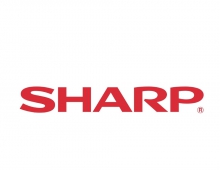
New Solar Cell By Sharp Features The World's Highest Conversion Efficiency
Sharp claims that it has achieved the world's highest solar cell conversion efficiency of 36.9% using a triple-junction compound solar cell in which the solar cell has a stacked three-layer structure.
 Compound solar cells utilize photo-absorption layers made from compounds consisting of two or more elements, such as indium and gallium. Because of their high conversion efficiency, compound solar cells have been used primarily on space satellites.
Compound solar cells utilize photo-absorption layers made from compounds consisting of two or more elements, such as indium and gallium. Because of their high conversion efficiency, compound solar cells have been used primarily on space satellites.
Since 2000, Sharp has been pursuing research and development of a triple-junction compound solar cell that achieves high conversion efficiency by stacking three photo-absorption layers. In 2009, Sharp succeeded in improving cell conversion efficiency to 35.8% based on proprietary technology that enabled efficient fabrication of a stacked triple-layer structure with InGaAs (indium gallium arsenide) as the bottom layer.
Sharp said that the latest increase in conversion efficiency was achieved by improving the maximum power output of the solar cell by reducing the resistance of the junction areas necessary to connect the solar cell layers in series.

Measurement of the value of 36.9%, which sets a new record for the world's highest non-concentrating conversion efficiency, was confirmed at the National Institute of Advanced Industrial Science and Technology (AIST).
In the future, processes for transferring ultra-thin photovoltaic layers onto film substrates will make lightweight, flexible solar cells possible. Sharp's goal in the years to come is to take full advantage of this latest development success for use in concentrator-type solar cells, as well as for practical applications such as on space satellites and for flight craft and land vehicles.
 Compound solar cells utilize photo-absorption layers made from compounds consisting of two or more elements, such as indium and gallium. Because of their high conversion efficiency, compound solar cells have been used primarily on space satellites.
Compound solar cells utilize photo-absorption layers made from compounds consisting of two or more elements, such as indium and gallium. Because of their high conversion efficiency, compound solar cells have been used primarily on space satellites.
Since 2000, Sharp has been pursuing research and development of a triple-junction compound solar cell that achieves high conversion efficiency by stacking three photo-absorption layers. In 2009, Sharp succeeded in improving cell conversion efficiency to 35.8% based on proprietary technology that enabled efficient fabrication of a stacked triple-layer structure with InGaAs (indium gallium arsenide) as the bottom layer.
Sharp said that the latest increase in conversion efficiency was achieved by improving the maximum power output of the solar cell by reducing the resistance of the junction areas necessary to connect the solar cell layers in series.

Measurement of the value of 36.9%, which sets a new record for the world's highest non-concentrating conversion efficiency, was confirmed at the National Institute of Advanced Industrial Science and Technology (AIST).
In the future, processes for transferring ultra-thin photovoltaic layers onto film substrates will make lightweight, flexible solar cells possible. Sharp's goal in the years to come is to take full advantage of this latest development success for use in concentrator-type solar cells, as well as for practical applications such as on space satellites and for flight craft and land vehicles.





















